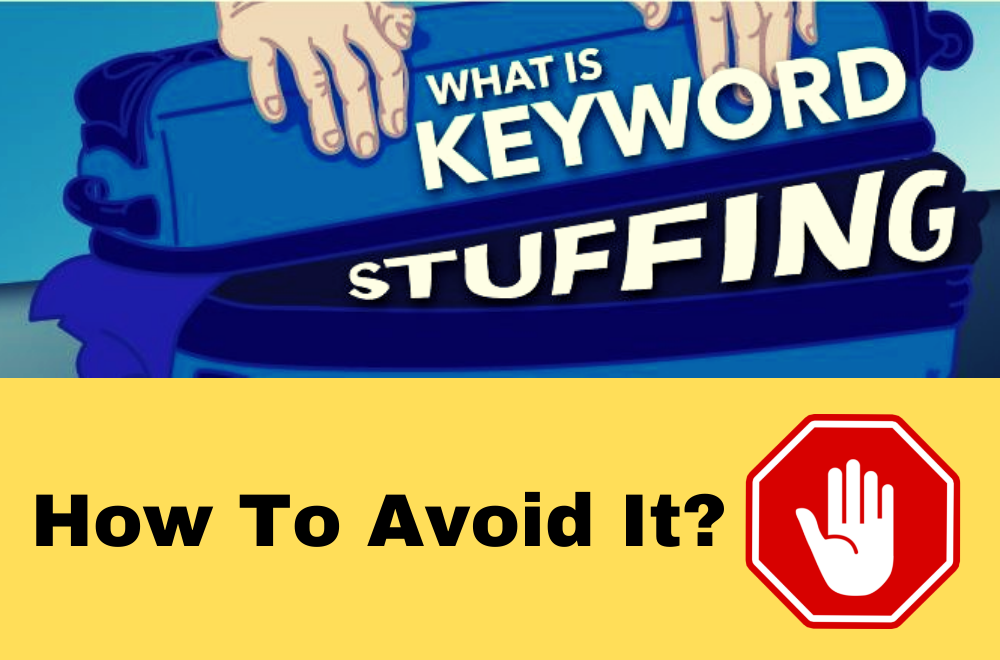To be lovable in the eyes of Google, you must not be part of a dangerous game of keyword stuffing. Search engines can easily recognize if your webpage is full of keywords that are frequently distributed around the web.
So using the keyword over and over again is an unnatural practice that leaves a bad impression on users and ultimately increases the bounce rate. Hence, your site’s ranking goes down in Google.
People who still think that keyword stuffing is good in SEO are living in an idiot’s paradise. It might be possible that you get temporary results, but when Google finds out, you will be thrown out of the ranking, which leads to penalization.
Now, if you want to rank high on a SERP, you need to avoid keyword stuffing. It was an SEO tactic in the past, but now it’s nothing more than spam because this method focuses on deceiving Google algorithms rather than bad user experience. So make sure your content complies with an authentic SEO checklist for better quality.
Google is smart enough now and always loves content that helps its users and delivers maximum value to enhance the user experience.
Table of Contents
What is considered “keyword stuffing”?
Keyword stuffing is a method of generating web content by using specific terms or phrases abnormally throughout in the hope of ranking higher in search results.
There are two major types, which include visible and invisible. Here are the signs that reflect and help you identify visible keyword stuffing.
- Unnecessary repetition of words or phrases in content
- use of words that are unrelated to the page’s topic
- Adding out of context words to
- Every other block containing the same keyword
On the other hand, people also use another tactic that’s called “invisible keyword stuffing.” This is because users cannot see this, but crawlers on search engines can identify all of these.
Now the question is how invisible keyword stuffing works. For that, some websites do the following tasks:
- Try to hide text by using the same color as the background. In this way, they can deceive the user but not the search engines.
- Overuse the words in the meta and comment tags.
- Repeated use of words or phrases in image alt text and webpage code
Keep in mind, it’s a black hat practice. Whether it’s visible or invisible keyword stuffing, you are actually destroying your website’s SEO.
What is a Keyword Stuffing Example?
Let me show you an example here:

It’s quite unattractive and annoying. Right?
In this example, a keyword is overused in this copy. That means keyword density is too high, which is not a safe range. When a user lands on such a web page, they don’t get engaged due to messing up with the same wordy content repeatedly. The users feel it is not delivering any value, which causes them to get out of it due to poor user experience.
How Can You Avoid Keyword Stuffing?
Identifying the search intent is crucial for writing high-quality content instead of stuffing it with keywords. That means writing for the user first and then the search engine, and appropriately using the keyword in context is the best way to rank your web page in search results. Here I have come up with some right ways of using keywords to avoid this bad SEO tactic.
1. Place Your Keywords in the right blocks
Instead of including your target term in unnatural ways, you must contextually fit the word in a way that makes sense. Your blog post has some important elements, or blocks, where you should place your target keyword once, and in the main body content as well. These blocks include:
- Page title
- The first paragraph (within the first 100 or 150 words)
- Image Alt text
- Meta description
- In or near the conclusion
2. Assign A Primary keyword to each Post
When you assign a primary keyword to one page, make sure not to use or target it on your other pages or posts. Why?
Because If your multiple web pages are targeting the same term, then they will compete against each other, which is called “keyword cannibalization.” Thus, search engines will be confused about which page to consider for ranking for that term. As a result, none of the pages can rank higher in search results.
So each blog post must be tightly focused on one primary keyword that is relevant to the topic as well. This will help you improve your chances of ranking on Google.
3. Write Long-Form Articles
To avoid keyword stuffing and encourage search engines to rank your post, always try to write an article of more than 600 words. This will help to distribute keywords properly. As the search engines aim to deliver the most relevant results to their users, if you write detailed, helpful, and thorough content that is relevant, it is more likely to rank for many related search terms.
4. Use the Appropriate Primary keyword density in a Copy
Keyword density is the ratio of the number of times a specific keyword is used to the total number of words in an article.
There is no set rule on how much your keyword density should be. However, you must use best practices to stay within the Google guidelines.
Most SEO experts believe that the ideal keyword density is less than 2% in an article. So don’t overuse it abnormally. only place the term where it feels natural and relevant.
5. Include synonyms, secondary keywords, and long-tail keyword variations
Instead of using the primary term, again and again, another way is to use the LSI keywords or secondary terms. These phrases help search engines understand what your content is about. So using the synonyms and long-tail variations relevant to the primary term reinforces Google’s ability to get context and rank accordingly.
Mostly, long-tail keyword variations allow us to answer the different questions related to the primary keyword, which may be included in the Google “People also ask” section. By using these related terms and phrases, which play a vital role in avoiding keyword stuffing.
Conclusion
Writing quality, useful, knowledgeable content that maintains the user’s engagement is the key to success for your online business. Since your audience or users are your potential customers, when you take care of them, you can ultimately hold them on your website. That is the point where search engines like you and give you value based on your positive traffic behavior.
On the other hand, when you write for search engines, you use spam tactics like stuffing the page elements with keywords in the hopes of ranking high. You will be disliked by users.
I always follow these best practices to avoid keyword stuffing in my content to make my viewers happy. I hope you like this piece of content. Share it with others and start practicing it on your new project. Best of luck!




If someone wishes to be updated with the most up-to-date technologies after that he must pay a visit to this site and be up to date every day.
Nice post. I used to be checking constantly this weblog and I am impressed! Very useful info specially the final phase 🙂 I care for such info much. I used to be looking for this certain information for a very long time. Thanks and best of luck. |
Great site you have here but I was wanting to know if you knew of any discussion boards that cover the same topics talked about in this article? I’d really like to be a part of community where I can get feed-back from other knowledgeable people that share the same interest. If you have any recommendations, please let me know. Cheers!|
My developer is trying to convince me to move to .net from PHP. I have always disliked the idea because of the expenses. But he’s trying nonetheless. I’ve been using WordPress on numerous websites for about a year and am nervous about switching to another platform. I have heard excellent things about blogengine.net. Is there a way I can import all my WordPress posts into it? Any help would be really appreciated!